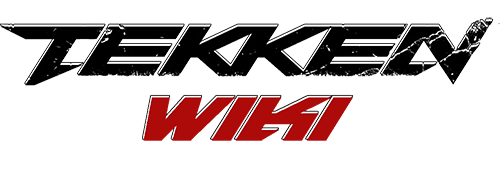Tekken Advance (鉄拳アドバンス Tekken Adobansu?, lit. Iron Fist Advance) is a Tekken spin-off game for the Game Boy Advance. It shares some similar aspects to Tekken Tag Tournament. It was the first Tekken game on a Nintendo platform. It was released on December 21, 2001 in Japan, January 28, 2002 in North America, and March 29, 2002 in Europe.
Gameplay[]
The gameplay in Tekken Advance is similar to others in the series but with the controls slightly modified to match the Gameboy Advance's inputs. Unlike previous installments, the control scheme had to be simplified with each button controlling either a punch, kick or throw instead of having one button per limb. The new control scheme was the A button to kick, B to punch, and R for throw moves. The L button is only used in the 3 vs. 3 mode to tag out. The game has a sidestep mechanic that gives the illusion of 3-D graphics.
Modes[]
- Arcade
- VS Battle (link cable required)
- Time Attack
- Survival
- 3 On 3 Tag Arcade
- 3 On 3 Tag VS Battle (link cable required)
- 3 On 3 Team Arcade (unlockable)
- 3 On 3 Team VS Battle (unlockable, link cable required)
- Practice
Characters[]
| Playable |
|---|
| Forest Law |
| Gun Jack |
| Heihachi Mishima (unlockable) |
| Hwoarang |
| Jin Kazama |
| King II |
| Ling Xiaoyu |
| Nina Williams |
| Paul Phoenix |
| Yoshimitsu |
Trivia[]
- Due to the limitations of the sprite-based engine, side and back throws are not possible, and characters can only be facing directly towards or away from their opponent. There are also problems related to the game judging 3D space for attacks while one character is sidestepping.
- All characters' movelists are greatly shortened due to the removal of two attack buttons and the limitations of the sprites.
- The player can very rapidly sidestep and quickly travel around the opponent by mashing the up or down directional.
- The sprites are pre-rendered 3D, captured from the characters' 3D models and heavily downsized.
- Heihachi Mishima can be unlocked by beating Arcade mode with all the initial characters.
- At the end of a 3 On 3 Arcade mode playthrough, the player will fight a team of three Heihachi clones.
- There are no character endings. The game goes straight to the credit roll after beating Heihachi.
- Most characters' standard throw animations have been replaced with a short automatic combo.
- When King and Nina Williams perform their chain command throws, the screen will switch to a series of still images of them performing the moves on a black silhouette of a person, regardless of their opponent.
- This was the only Tekken fighting game without post-round replays until Tekken Tag Tournament 2 and Tekken 7.
- The game's soundtrack had two songs ripped from Tekken 3's arcade soundtrack and the character select theme from the console version. Other themes were exclusive to this game.
- The stages are actually the locations from Tekken 3, but are based off of their appearances in Tekken Tag Tournament. Also, while some of those stages appeared in this game, the characters that owned those stages did not. Others were shared with other fighters. For example, Grassy Land, a stage that used to be home to Eddy Gordo, is instead used by Ling Xiaoyu and King II. Also Paul Phoenix is fought in Jin Kazama's Tiger Dojo Tokyo stage, Hwoarang is battled in Forest Law's Martial Arts stage, and Heihachi, as the final boss, is fought in Ogre's Temple (justified since he had a stage whose path led into his temple).
